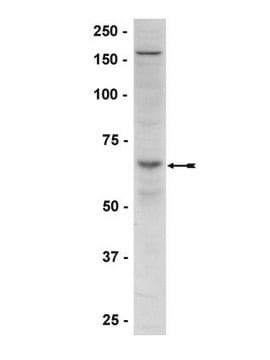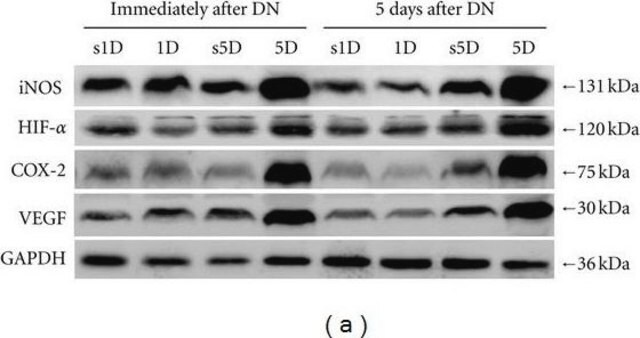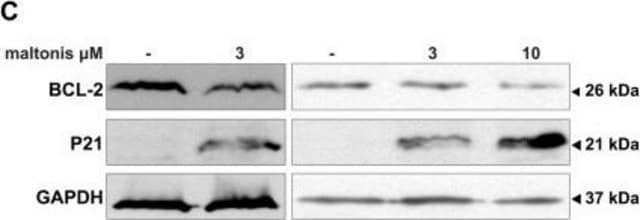07-350
Anti-AMPK α1 Antibody
Upstate®, from rabbit
Sinonimo/i:
5′-AMP-activated protein kinase, catalytic alpha-1 chain, AMP -activate kinase alpha 1 subunit, AMP-activated protein kinase, catalytic, alpha-1, AMPK alpha 1, AMPK alpha-1 chain, protein kinase, AMP-activated, alpha 1 catalytic subunit
About This Item
Prodotti consigliati
Origine biologica
rabbit
Livello qualitativo
Forma dell’anticorpo
purified immunoglobulin
Tipo di anticorpo
primary antibodies
Clone
polyclonal
Reattività contro le specie
human
Reattività contro le specie (prevista in base all’omologia)
rat (based on 100% sequence homology), mouse (based on 100% sequence homology)
Confezionamento
antibody small pack of 25 μg
Produttore/marchio commerciale
Upstate®
tecniche
immunohistochemistry: suitable
western blot: suitable
Isotipo
IgG
N° accesso NCBI
N° accesso UniProt
Condizioni di spedizione
ambient
modifica post-traduzionali bersaglio
unmodified
Informazioni sul gene
human ... PRKAA1(5562)
mouse ... Prkaa1(105787)
rat ... Prkaa1(65248)
Categorie correlate
Descrizione generale
Specificità
Immunogeno
Applicazioni
Western Blot Analysis: 2 μg/mL of this antibody detected AMPK α1 in RIPA lysates from non-stimulated A431 cells.
Immunohistochemistry (Paraffin) Analysis: 1:250 dilution of this antibody detected AMPK α1 in human gallbladder tissue sections.
Signaling
Insulin/Energy Signaling
Qualità
Western Blot Analysis:
0.5-2 μg/mL of this antibody detected AMPK α1 in RIPA lysates from non-stimulated A431 cells.
Descrizione del bersaglio
Linkage
Stato fisico
Stoccaggio e stabilità
Risultati analitici
Positive Antigen Control: Catalog #12-301, non-stimulated A431 cell lysate. Add 2.5µL of 2-mercaptoethanol/100µL of lysate and boil for 5 minutes to reduce the preparation. Load 20µg of reduced lysate per lane for minigels.
Altre note
Note legali
Esclusione di responsabilità
Not finding the right product?
Try our Motore di ricerca dei prodotti.
Raccomandato
Codice della classe di stoccaggio
10 - Combustible liquids
Classe di pericolosità dell'acqua (WGK)
WGK 1
Certificati d'analisi (COA)
Cerca il Certificati d'analisi (COA) digitando il numero di lotto/batch corrispondente. I numeri di lotto o di batch sono stampati sull'etichetta dei prodotti dopo la parola ‘Lotto’ o ‘Batch’.
Possiedi già questo prodotto?
I documenti relativi ai prodotti acquistati recentemente sono disponibili nell’Archivio dei documenti.
Articoli
Autophagy is a regulated process involved in cell growth, development, and recycling of cytoplasmic components in cells.
Il team dei nostri ricercatori vanta grande esperienza in tutte le aree della ricerca quali Life Science, scienza dei materiali, sintesi chimica, cromatografia, discipline analitiche, ecc..
Contatta l'Assistenza Tecnica.








